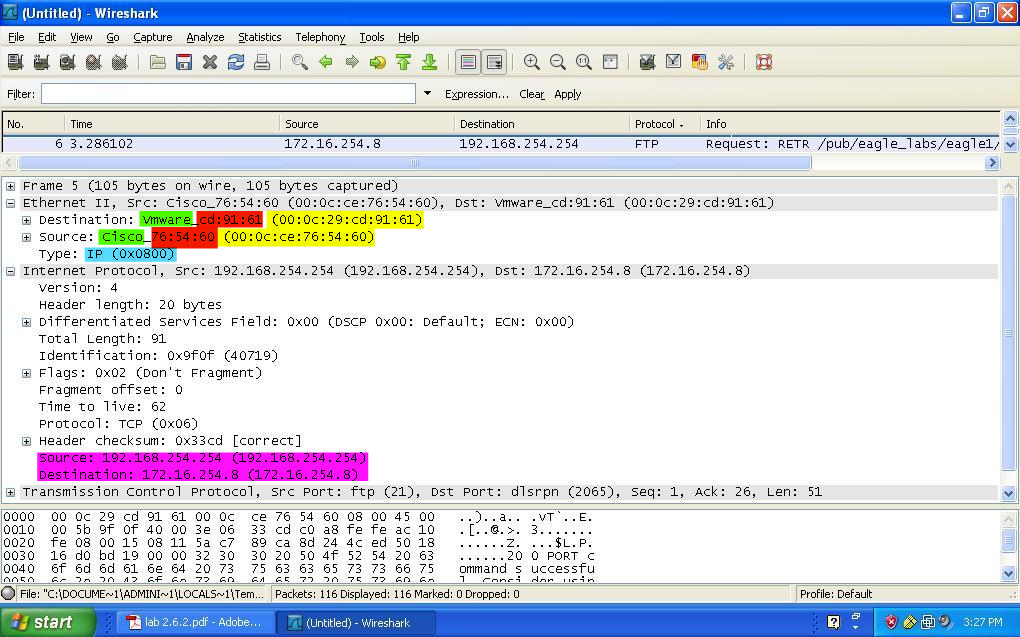

The data field is between 46 – 1,500 bytes.

Two common frame types are:Ġx0806 Address resolution protocol (ARP) Data ARP Contains the encapsulated upper-level protocol. There are numerous upper-layer protocols supported by Ethernet II. Frame Type 0x0806 For Ethernet II frames, this field contains a hexadecimal value that is used to indicate the type of upper-layer protocol in the data field.
#Wireshark mac destination serial number#
Each address is 48 bits long, or 6 octets, expressed as 12 hexadecimal digits, 0-9,A-F.Ī common format is 12:34:56:78:9A:BC.The first six hex numbers indicate the manufacturer of the network interface card (NIC), the last six hex numbers are the serial number of the NIC.The destination address may be a broadcast, which contains all ones, or a unicast. Source Address Broadcast (ff:ff:ff:ff:ff:ff) Field Value Description Preamble Not shown in capture This field contains synchronizing bits, processed by the NIC hardware. The following table takes the first frame in the Wireshark capture and displays the data in the Ethernet II header fields. Step 3: Examine the Ethernet II header contents of an ARP request. The session begins with an ARP query for the MAC address of the gateway router, followed by four ping requests and replies. A filter has been applied to Wireshark to view the ARP and ICMP protocols only.
#Wireshark mac destination Pc#
The Wireshark capture below shows the packets generated by a ping being issued from a PC host to its default gateway. Type Data FCS 8 Bytes 6 Bytes 6 Bytes 2 Bytes 46 – 1500 Bytes 4 Bytes Step 2: Examine Ethernet frames in a Wireshark capture. Step 1: Review the Ethernet II header field descriptions and lengths. A Wireshark capture will be used to examine the contents in those fields. In Part 1, you will examine the header fields and content in an Ethernet II Frame provided to you.


 0 kommentar(er)
0 kommentar(er)
